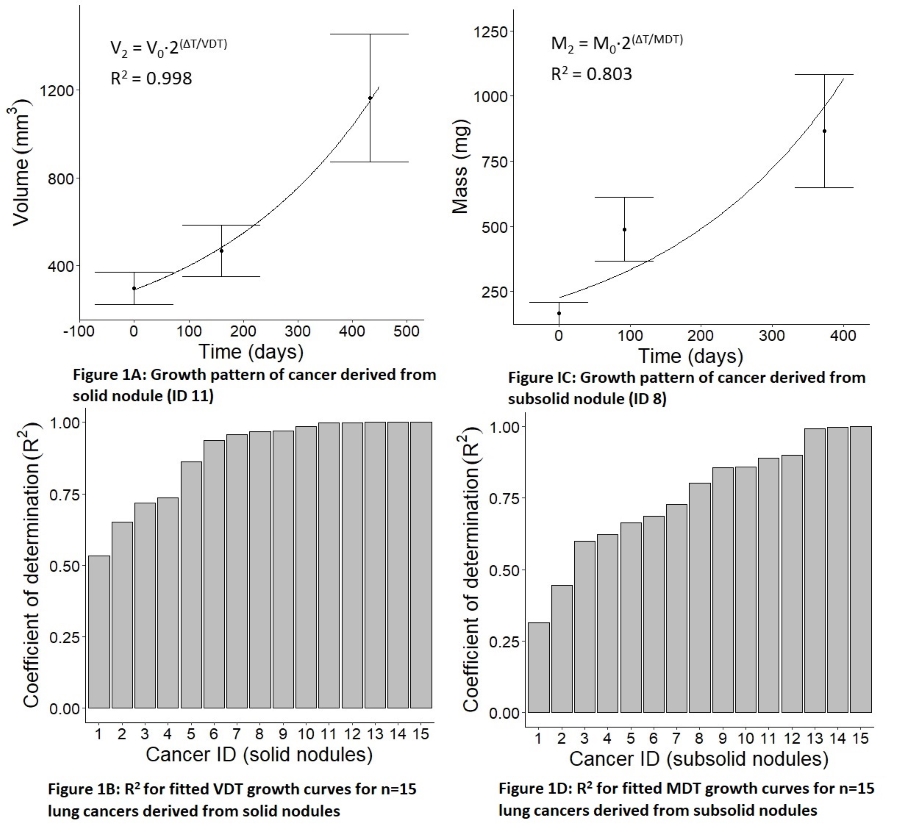Abstract
Background: The use of volume doubling time (VDT) to distinguish malignant from benign or indolent nodules assumes a consistent exponential pattern of growth in early NSCLC, but there is limited in vivo evidence for this.
Aim: To assess the accuracy of doubling-time models in describing growth patterns of early NSCLC presenting as screen-detected nodules.
Methods: Malignant nodules in the SUMMIT lung cancer screening study (NCT03934866) seen on ?3 scans were included. Volumetric analysis of nodules was performed with CADe (Veolity, MeVis). VDT was used for solid nodules and mass-doubling time (MDT) for subsolid nodules.
Predicted growth curves were modelled with V2 = V0?2(?T/VDT) and M2 = M0?2(?T/MDT) where V2 and V0 and M2 and M0 were final and initial volume or mass respectively and ?T is time. Goodness of fit was assessed by the co-efficient of determination (R2, perfect fit = 1.0).
Results: 30 cancers were included (15 from solid and 15 from subsolid nodules). Median time from first to final scan before referral was 375 days (range 189-846). Mean R2 was 0.888 (IQR 0.799- 0.998) for VDT in solid nodules (figure 1B) and 0.757 (IQR 0.316- 0.895) for MDT in subsolid nodules (figure 1D).
Conclusion: Doubling-time models showed robust goodness of fit in describing the pattern of volumetric growth of cancers as solid nodules but was potentially less accurate in describing mass growth of cancers as subsolid nodules.
